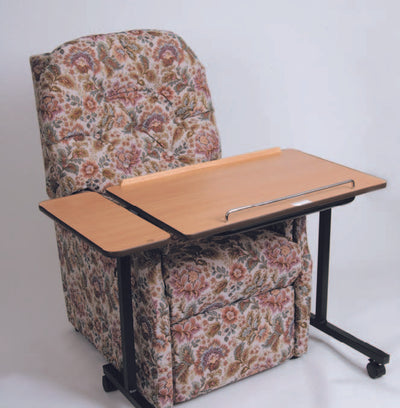It’s estimated that over a third of people over the age of 65 will experience at least one fall every year of their life. Although not all trips or falls are serious, as we age the chances of a fall causing serious injury, or even a fatality, increase significantly.
Falls at home can be a significant risk, especially for older adults or people living with mobility issues.
However, falls don’t have to be an inevitable part of the ageing process. There are lots of tactics you can employ to help prevent a slip or trip in the home environment.
Here are some general tips to help fall-proof your home:
Non-Slip Flooring
Fall-proofing your home should start with assessing the floor surfaces. Fix loose floorboards, attend to uneven surfaces, and have a thorough check for any other potential trip, slip or fall hazards promptly.
Consider, if the home has stairs or steps, fitting anti-slip tread to create more traction and less slip while using the stairs at home.
Loose rugs, doormats and shower mats can pose a serious trip risk for the elderly or those with less mobility. Loose rugs can slip and have uneven or raised corners or edges that will easily cause trips or falls. Replace rugs and mats with non-slip rug pads or attach double sided tape to secure rugs and carpets to the floor.
Where it’s appropriate e.g. kitchens and bathrooms, replace the flooring with non-slip or slip-resistance flooring types.
Handrails and Grab Bars
Providing handy grab bars in high traffic areas or tricky to negotiate areas around the house (such as steps, awkward corners, bathrooms, kitchens, dressing areas etc) is another great way to prevent falls and slips.
Handrails and grab bars placed in strategic positions will help with balance and transitional movement - e.g. standing up from sitting on the toilet, lifting yourself up steps, holding to balance while dressing. Having dependable aids to hold on to can hugely improve the confidence and independence of an elderly person living in their own home.
Be sure to install grab bars and handrails properly. If you’re not confident that you can do so, contact a professional to install them for you.
Improve Lighting
It might seem obvious but good visibility reduces the chances of slips and falls. Rooms with dim lighting create shadows, dark hazard spots and make it harder to judge distances and steps, leading to falls, trips and stumbles.
Consider installing good strong lighting throughout the house, especially in hallways and staircases to help with navigation and spatial awareness throughout the day and night.
In some cases, it might also be worth installing high visibility tape or individual step lighting on staircases to make negotiating these areas much easier.
Use night lighting in bedrooms, hallways and bathrooms for specific
Improve Your Footwear
It might sound surprising but research has shown that wearing socks or going barefoot might actually lead to a higher risk of falling in the home. So, making sure that you’re wearing well-fitted, non-slip shoes will help to prevent trips, slips and falls around the house.
Wearing proper footwear at home helps with good balance and stability on smooth or slippery floor surfaces. Areas like the bathroom and kitchen can be slippier than, say, the hall or sitting room so extra traction on your shoes will come in handy in these rooms.
Well fitted slippers or shoes can also protect your feet from injuries like stubbing or bumping into furniture etc, which can also lead to imbalance and falls in the elderly.
Regular Maintenance and Decluttering
Ensuring the home is fall-proof should be seen as an on-going project. Regularly checking for new trip hazards or maintenance on floor surfaces, grab bars and lighting etc should be a part of your routine.
Be sure to keep the home clutter-free. Keep walkways and hallways clear of obstacles, such as loose rugs, cords, and other tripping hazards. Arrange the furniture to allow for clear pathways.
Be organised with how you store items brought into the house, and things that are regularly used. For example, in the kitchen and the bathroom it’s best to store frequently used items at waist height to avoid having to bend or stretch to reach too often. Bending and stretching can lead to imbalance, and a higher risk of falls.
If the elderly person is concerned about the possibility of falling without being close to others for immediate help, it would be wise to consider installing a home safety alert system with a personal SOS pendant to call for help if needed.
Just keep regularly assessing the home for potential fall hazards and make adjustments accordingly. Your GP or health professional should also be able to refer you to an occupational therapist for personal advice based on the specific needs and circumstances of the elderly person involved.




































